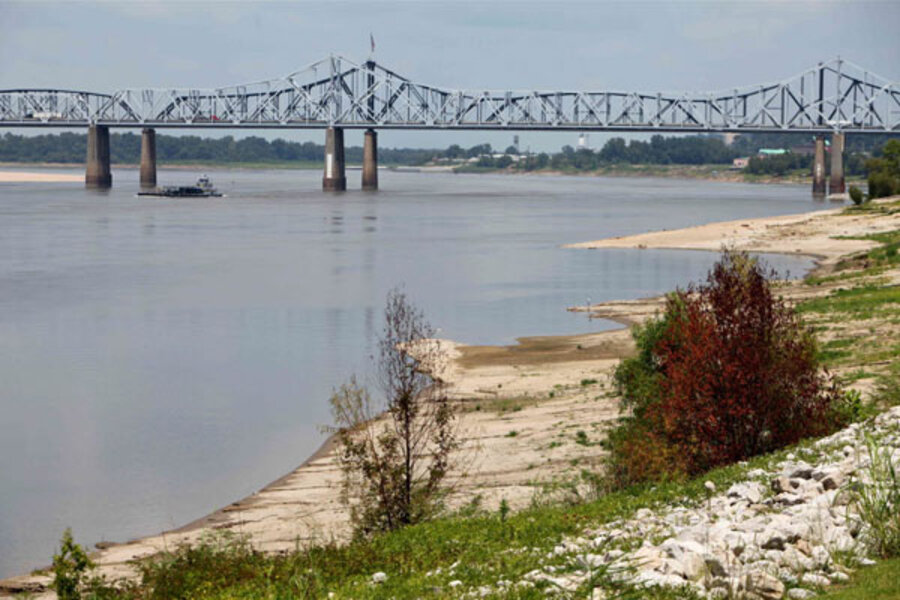Army Corps of Engineers: Drought-exposed river sandbars a danger
| ST. LOUIS
A lack of rain in the United States' midsection in recent months has reduced water levels in some of the nation's biggest rivers, exposing sandbars that experts warn could be deadly quicksand.
Rivers such as the Mississippi and Missouri are typically low in August, but this year's drought has them at their lowest point in decades. The sandbars that are revealed look like beaches, inviting boaters, fishermen and hikers to venture out. Experts agree that can be a very bad idea.
Steve Barry, emergency management chief for the Corps of Engineers office in Memphis, Tenn., said the exposed sand looks dry on top but it is really saturated mud. Combined with the undercurrent of water in the fast-moving rivers, that creates a true danger.
"If it's really wet sand and there's flowing water underneath it, that's what quicksand is," Barry said. "The other issue is that as the river flows by it undercuts. You think you're on a sandbar but you're basically on a ledge. You put enough weight on it and you end up in the river."
The last time the Mississippi and Missouri were this low was 1988. There were at least seven deaths along the Mississippi blamed on drought-weakened sandbars in 1988, the Corps of Engineers said. Three people drowned that year near Natchez, Miss. And three children and an adult who tried to save them drowned near Ripley, Tenn., when they were swept into the river after a sandbar collapsed.
Earlier this month, an 11-year-old girl had to be rescued after sand swallowed her up to her waist while she and her family fished along the Mississippi near New Madrid in southeast Missouri. Firefighter Jim Russell said the girl began to sink and the more she struggled, the faster she descended.
Russell and another firefighter found a slab of concrete debris to stabilize themselves, then had to dig the girl out by hand. She was scared but unharmed.
"When you get to knee depth, you can't get out," Russell said. "It just starts sucking you down in it. It's really like heavy goo. It looks dry on top but really it's waterlogged."
Lt. Ryan Gomez of the U.S. Coast Guard said the best suggestion is to stay off sandbars. Otherwise, he urged the use of lifejackets for anyone in or near the water.






